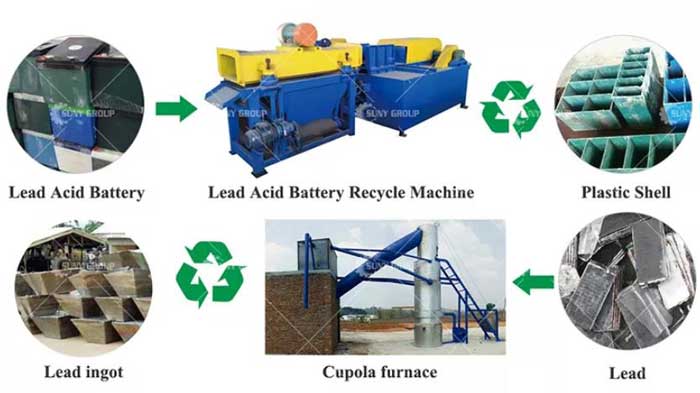Now the trams and cars all over the streets are inseparable from a product called lead-acid battery. With the development of related industries and the birth and application of electronic products, the demand for lead-acid batteries can be said to be in short supply. There is a large space for development, and it has also become a trend of rapid development. So here comes the question. The use of so many lead-acid batteries will inevitably result in a large number of waste lead-acid batteries. At this moment, what do we need to do to solve this thorny problem?
The first thing to do is to recycle waste lead-acid batteries. Today, let's talk about the lead-acid battery recycling method and related smelting process!
Waste lead recovery technology of waste lead-acid battery
The waste lead recovery technology for waste lead-acid batteries is generally divided into three types: pyrometallurgy process, hydrometallurgy process, and solid-phase electrolysis process.

1. Pyrometallurgy process
Reduction smelting is mainly used for pyrolysis of waste lead-acid batteries. In addition to reducing agents, fluxes such as iron filings, sodium carbonate, limestone, quartz and fluorite can also be added to the smelting process.
2. Hydrometallurgy process
The battery fragments obtained after dismantling and pretreatment of waste lead-acid batteries are a mixture of metal lead, lead oxides, lead salts and other metals such as copper, silver, and arsenic.
Hydrometallurgical technology, also known as electrolysis, selectively reduces all lead compounds in battery fragments to metallic lead by the action of electricity. Its main feature is that there is no waste gas and waste residue in the smelting process, and the recovery rate of lead can reach 95~97%.
The working principle of the hydrometallurgical technology is to add a reducing agent to the solution, and the reducing agent in the lead reduction process can be configured with iron and steel pickling wastewater to achieve the purpose of "using waste to treat waste".
3. Solid-phase electrolysis process
The solid-phase electrolysis process uses sodium hydroxide aqueous solution as the electrolyte, the cathode and anode are made of stainless steel plates, and the solid-phase leaded substance molecules in the lead paste during electrolysis are used to obtain electrons from the cathode surface and reduce to metallic lead.
The above is a brief introduction to the current situation and process of waste lead-acid battery recycling that SUNY GROUP can do. Waste lead-acid batteries have high lead content, and their recycling has strong economic and environmental benefits.
Thank you for your interest in suny group. If you want to learn more about our E-waste recycling plant, copper wire recycling machine and other machines, Contact us now to find out what we can do for you next project!E-mail:sunymachine@gmail.com | Whatsapp:+8613674945231